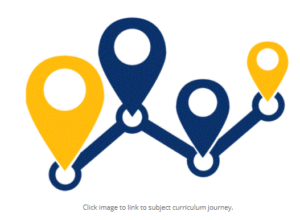At KS3 Textiles contributes to the delivery of the Design and Technology national curriculum. In Textiles we aim to turn pupils into good textiles artists. To do that we invest time in developing evaluation and practical skills. We see evaluation as integral and ongoing: a method by which pupils can learn about products, design, materials, media, equipment and experience both success and failure. Evaluation runs throughout a project – be that analysing an artists techniques or use of colour, self or peer evaluation, evaluating design choices, evaluating responses against exemplar materials or final evaluations. Reflection is integral to our curriculum, for example if pupils can identify good reasons why a product has been made from natural materials rather than man made we have learnt something both about natural and man-made sources. In Textiles lessons you will see that evaluations build from year to year both in terms of the criteria that pupils respond to but also the level of response expected. They develop in complexity through their experiences of products, processes and design in a range of materials and situations. Their descriptions become analysis, and this analysis supports progress in knowledge and understanding.
Practical skills are important as pupils cannot become good designers without a broad experience of materials, methods, and equipment. Practical gives opportunities to learn how materials behave, and how designs can be achieved. Theory and practical are intertwined to enable students to see how they interconnect in real world terms.
At KS3 pupils experience one textiles project each year. Each project reinforces and builds on the knowledge and skills from the previous year. There is overlap between textiles and the other D&T areas that enable retrieval of key elements such as evaluation, research, presentation, design, safe working and SMSC/school values. KS3 in textiles provides a broad foundation for the evaluation skills, practical skills and independence they will need if they choose to study the subject at KS4 for GCSE.
During KS3 pupils will experience three textiles based projects. In year 7 pupils make a textiles piece based on the theme of marine life following our ‘Discovery’ curriculum. After researching into the artist Vincent Scarpace, Emily Knotman, pupils learn about and experiment with the sewing machine, fabric pastels. A final piece is made from upcycled materials using fabrics coloured in different ways and pupils end up with a marine life themed textile picture. In year 8 new artists are introduced: Lucy Sparrow and Pricilla Jones. The theme for this project is confectionary. The outcome for this project is another fabric image using new techniques including free motion machine embroidery. KS3 in textiles finishes in year 9 with birds. This more challenging project includes researching into the work of the artists Abby Diamond and Cas Holmes. A wider range of decorative techniques are taught and the most appropriate ones are used with a higher degree of precision and accuracy for a fabric depiction of a bird.
KS4 Textiles
KS3 textiles provides a broad foundation for further study at KS4. For Textiles GCSE pupils continue to develop and apply their evaluation skills, design and practical skills. Projects are personal to the pupils and as such their ability to apply what they have learnt through evaluation, interpretation, experimentation and refinement is essential for their final pieces:
By the end of KS4 pupils studying textiles will have completed detailed research into a wide range of artists, designers and techniques. An extended project is completed into a them such as ‘alternative worlds’, literature’, ‘vintage’ or ‘gothic’. There are four assessment objectives (AO’s). In AO1 pupils explore a full range of sewing, weaving, printing and decorative techniques and research into their theme by looking at a range of artists and designers work for inspiration. A full range of sewing techniques and decorative techniques like batik, dyeing, printing and applique are evaluated on a range of materials In AO2 pupils use their new skills to experiment with techniques that best meet their theme and mirror their chosen artists. For AO3 they will have developed their own designs based on what they have learned. Pupils design, model, finesse and plan their final piece. This final piece is planned and modelled before being presented formally in AO4 – which is a larger textiles piece of their own choosing. These designs will further developed by experimenting with a range of techniques.. In the final term of year 11 pupils complete an ‘exam’ where the exam board sets a theme for the final project of the course. This is the final opportunity for pupils to research into artists and skills, before they experiment with techniques and plan out a final piece. This final piece is produced independently in a two day, 10 hour exam. The course work is worth 60% of the final grade and the ‘exam’ project is worth 40%.
GCSE (Art) Textiles 2 year plan: OCR
| Half term | Year 10 Topics | Year 11 Topics |
|
Autumn 1
|
Coursework Individual themes AO3 |
Coursework Individual themes AO4 |
|
Autumn 2
|
Coursework Individual themes AO1 |
Coursework Individual themes AO1, 2, 3 and 4 completion |
|
Spring 1
|
Coursework Individual themes AO2 |
Exam Introduction to OCR themes. A01, 2, 3 and 4 |
|
Spring 2 |
Coursework Individual themes AO2 |
Exam A02 and A03 |
|
Summer 1
|
Coursework Individual themes AO1, 2 and 3 |
Exam A04 |


